How to layer your skin care products in the right order
Select independently determines what we cover and recommend. When you buy through our links, we may earn a commission. Learn more.
Skin care — and specifically the art of building a skin care routine — can be a form of self-care. But with hundreds of products on the market, figuring out the correct way to layer serums, moisturizers and eye creams can be quite tricky. To help you determine the correct order to apply your products for both morning and night, we spoke to four dermatologists, plus got their recommendations for the best items in each category.
SKIP AHEAD Morning skin care routine | Nighttime skin care routine | How to shop for skin care products
Our top picks
Best daytime cleanser: Cetaphil Gentle Skin Cleanser
Best cleanser for acne: Panoxyl Acne Foaming Wash
Best daytime moisturizer: La Roche Posay Toleraine Double Repair Face Moisturizer
Best sunscreen: Elta MD UV Clear Face Sunscreen SPF 46
Best serum: SkinCeuticals Vitamin C E Ferulic Serum
Best nighttime moisturizer: Kiehls Ultra Facial Cream
Best retinol treatment: Differin Acne Treatment Gel
Best eye cream: RoC Retinol Correxion Line Smoothing Eye Cream
Best facial oil: Summer Fridays Heavenly Sixteen All-In-One Face Oil
How to build a skin care routine in 2023
When building a skin care routine, the general rule of thumb is to go from lightest to heaviest (in consistency), gradually layering on heavier products, like creams and lotions, as you go. This is because the skin absorbs lightweight products quickly, allowing you to layer on more products easily, according to board-certified dermatologist Dr. Hadley King.
Below, we’re outlining dermatologist-recommended steps to creating an effective skin care routine along with their recommendations for each step. Even though our experts say that piling on extra products or following an extensive, multistep skin care routine does not actually yield more benefits, we got their insight on some optional steps, including how to incorporate devices like an LED mask or gua sha.
Morning skin care routine
For many people, your morning routine will look similar to your nighttime routine. However, certain products, like sunscreen, are most beneficial in the morning because they set you up for your day by protecting you from environmental factors.
In the morning, experts recommend using a cleanser, followed by a serum, moisturizer and sunscreen — in that order. When it comes to adding toners or eye creams to your morning routine, you can incorporate them if you choose, but they won’t really enhance the efficacy of a basic skin care routine in a major way, according to our experts. We’ll go into more detail on each step and what to know about the best products, below.
Step 1: Cleanser
Facial cleansers are a crucial first step in any morning routine; they can remove dirt, oil and debris that your skin may have collected overnight — which isn’t possible with just a splash of water, says board-certified dermatologist Dr. Michelle Henry. By cleansing your skin, you’re also priming it so that it can absorb future products, says Henry.
When it comes to choosing the right cleanser for your skin, you’ll want to consider a formula’s consistency:
Dry skin: If you have this skin type, creamy cleansers are a great option since they tend to have more oils that help moisturize the skin, according to Dr. Heather Woolery-Lloyd, a board-certified dermatologist in Miami.
Oily/acne-prone skin: For those with this skin type, you may want to incorporate a gel or foaming wash because they can get deep into pores and remove any debris buildup, says Woolery-Lloyd.
Sensitive skin: If you have sensitive skin, consider using a creamy or suds-free cleanser. Foaming cleansers can be irritating since they have stronger surfactants, which are chemicals that help wash away oils, according to Woolery-Lloyd.
Cetapahil Gentle Skin Cleanser
This creamy, hydrating formula does exactly what you’d want a cleanser to do: remove debris and excess oils from your skin, according to Woolery-Lloyd. Ingredients like niacinamide and glycerin help reinforce your skin barrier’s moisture levels, according to the brand. Protecting the skin barrier is especially key during the cleansing step because it protects your skin from losing too much water, while also keeping the barrier strong to defend against allergens in the air, says Woolery-Lloyd. It’s suitable for most skin types since it’s hypoallergenic, fragrance-free and non-comedogenic, so it shouldn’t cause unwanted breakouts or clog pores, according to the brand.
Cetaphil Gentle Skin Cleanser

Neutrogena Oil-Free Acne Wash
The salicylic acid in this oil-free facial cleanser makes it a great option for oily and acne-prone skin, says Woolery-Lloyd. (Salicylic acid is a key ingredient that helps treat and prevent breakouts.) Aside from helping with acne, it also unclogs pores and removes any excessive oil and dirt that has built up overnight.
Neutrogena Oil-Free Acne Wash
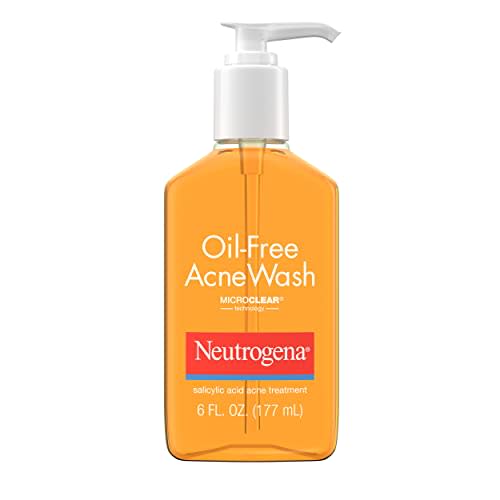
Neutrogena Oil-Free Acne Wash $ at Amazon
Neutrogena Oil-Free Acne Wash $ at Target
Neutrogena Oil-Free Acne Wash $ at CVS Pharmacy
Step 2 (optional): Toner
After cleansing, the next (optional) step is to add in a toner. Toners are liquids with a high water content that typically have humectants (to hydrate the skin) along with active ingredients like vitamin C (to brighten and protect the skin) and beta hydroxy acids, like salicylic acid, (to help exfoliate), according to King. They help complete the cleansing process and refresh your skin.
To apply, you can either pour some toner on a cotton pad and tap that into your face, or you can pat it directly onto your skin using your fingertips. After applying, you should not wash your face again like you would with a cleanser. Toners will absorb quickly and prep the skin for future products.
All of this is to say that our experts do not consider toner a necessity. If you want to use one and have “normal” skin, consider using a formula with antioxidants; if you have dry or sensitive skin you may want to use a hydrating and gentle toner instead. Those with acne-prone or oily skin should opt for an exfoliating toner with ingredients like salicylic acid, glycolic acid or lactic acid since these chemical exfoliants penetrate the skin and remove any debris buildup, says Woolery-Lloyd. Though, you shouldn’t use an exfoliating formula twice a day — it can dry out your skin and cause irritation, according to experts we spoke with.
Paula’s Choice Resist Advanced Replenishing Toner
This milky toner, which has a 4.6-star average rating from more than 900 reviews on Amazon, has hydrating ingredients like hyaluronic acid and primrose oil to combat dryness and retain moisture. It’s especially helpful after washing your face since it continues cleansing the skin, while also adding back in lost moisture from the previous step. It also has antioxidants to fight external aggressors like UV light and protect the skin from environmental damage, according to the brand. Apply this on your face and neck using a cotton pad.
Paula's Choice Advanced Replenishing Toner
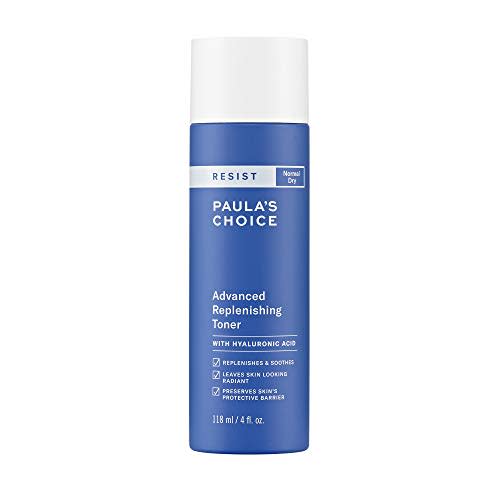
Paula's Choice Advanced Replenishing Toner $ at Amazon
Paula's Choice Advanced Replenishing Toner $ at Sephora
Paula's Choice Advanced Replenishing Toner $ at Paula's Choice
Glow Recipe Watermelon Glow PHA + BHA Pore-Tight Toner
This exfoliating toner, which has a 4.3-star average rating from over 4,100 reviews at Sephora, helps even skin texture by removing dead skin cells, according to Glow Recipe. Not only does it target pores, but it also has hydrating ingredients like hyaluronic acid, cactus water and watermelon to minimize fine lines and dark spots, according to the brand. For the most effective outcome, Glow Recipe recommends using it in the morning by patting the product into your face without wiping or rubbing it in.
Glow Recipe Watermelon Glow PHA + BHA Pore-Tight Toner
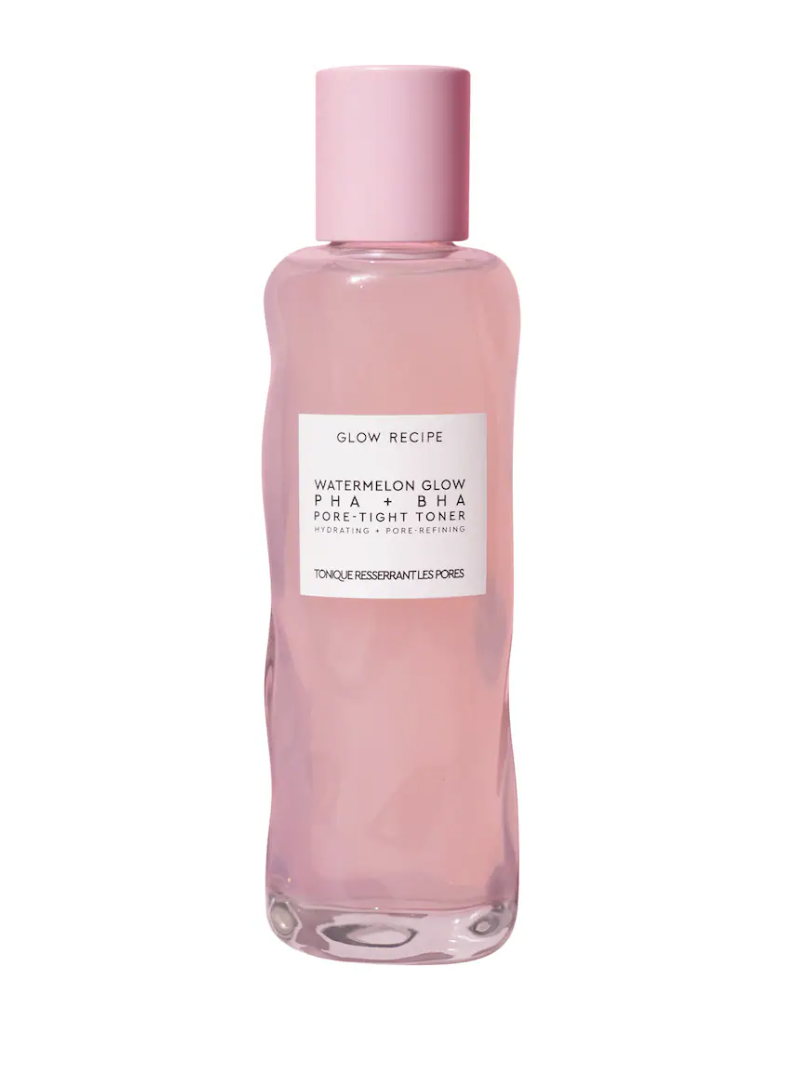
Glow Recipe Watermelon Glow PHA + BHA Pore-Tight Toner $ at Sephora
Glow Recipe Watermelon Glow PHA + BHA Pore-Tight Toner $ at Glow Recipe
Step 3: Serum
After cleansing, our experts recommend applying a serum. Serums are lightweight liquids that typically have high concentrations of specific ingredients to help your skin function in different ways (depending on the ingredient). For example, you may find serums with high concentrations of hyaluronic acid for hydration, niacinamide for even tone and texture, vitamin C for protection and brightening or vitamin E for protection and moisture.
Certain ingredients, like vitamin C, are best in the morning, because of how they work with other ingredients to set you up for the day ahead of you. (Vitamin C helps protect the skin from free radicals, but it also helps your sunscreen perform better, according to Woolery-Lloyd.)
You’ll want to apply your serum by gently spreading it across your face in a patting motion or you can massage it very gently. They typically have a lightweight texture that spreads easily and absorbs quickly, says King.
CeraVe Vitamin C Serum
This vitamin C serum, which comes recommended by Woolery-Lloyd, works to restore the skin barrier and hydrate your skin. Vitamin C also protects the skin from environmental aggressors like pollution, helps with brightening and evening discoloration, and improves collagen production, according to our experts. It’s fragrance-free, non-comedogenic and is suitable for all skin types.
CeraVe Vitamin C Serum
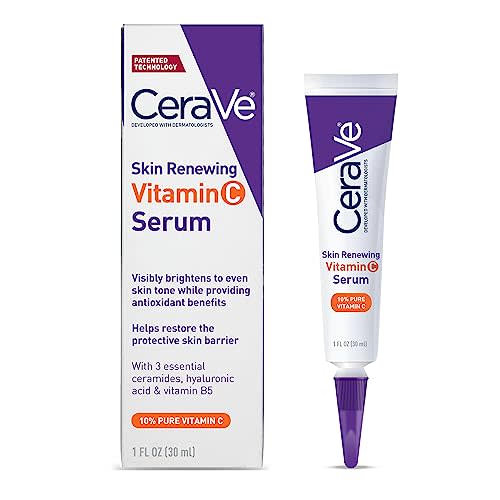
CeraVe Vitamin C Serum $ at Amazon
CeraVe Vitamin C Serum $ at Target
CeraVe Vitamin C Serum $ at Ulta
Sunday Riley B3 Nice 10% Niacinamide Serum
This vitamin B3 serum, also known as niacinamide, improves the tone and texture of the skin as well as supports the skin barrier and prevents water loss, according to our experts. The serum, which has a 4.7-star average rating from over 890 reviews at Sephora, is suitable for various skin concerns, including fine lines and hyperpigmentation. Apply it to your face, neck and décolleté after cleansing and prepping the skin, according to the brand.
Sunday Riley B3 Nice 10% Niacinamide Serum
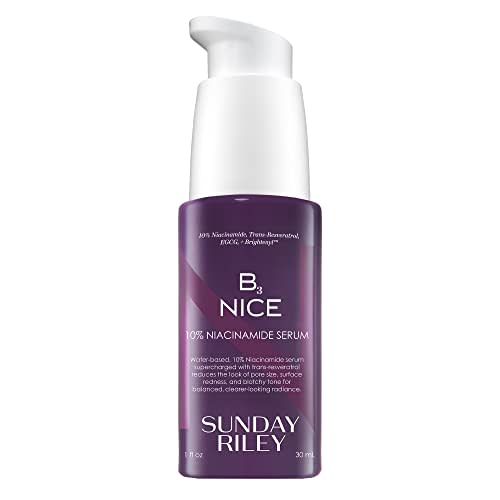
Sunday Riley B3 Nice 10% Niacinamide Serum $ at Amazon
Sunday Riley B3 Nice 10% Niacinamide Serum $ at Sephora
Sunday Riley B3 Nice 10% Niacinamide Serum $ at Ulta
SkinCeuticals Vitamin C E Ferulic Serum
Board-certified dermatologist Dr. Karen Kagha recommends this fast-absorbing serum because it protects, firms and brightens the skin. It has both vitamins C and E, and ferulic acid, which brightens the skin, protects it from outside aggressors and neutralizes free radicals (molecules that damage the skin by weakening it), according to the brand.
SkinCeuticals Vitamin C E Ferulic Serum
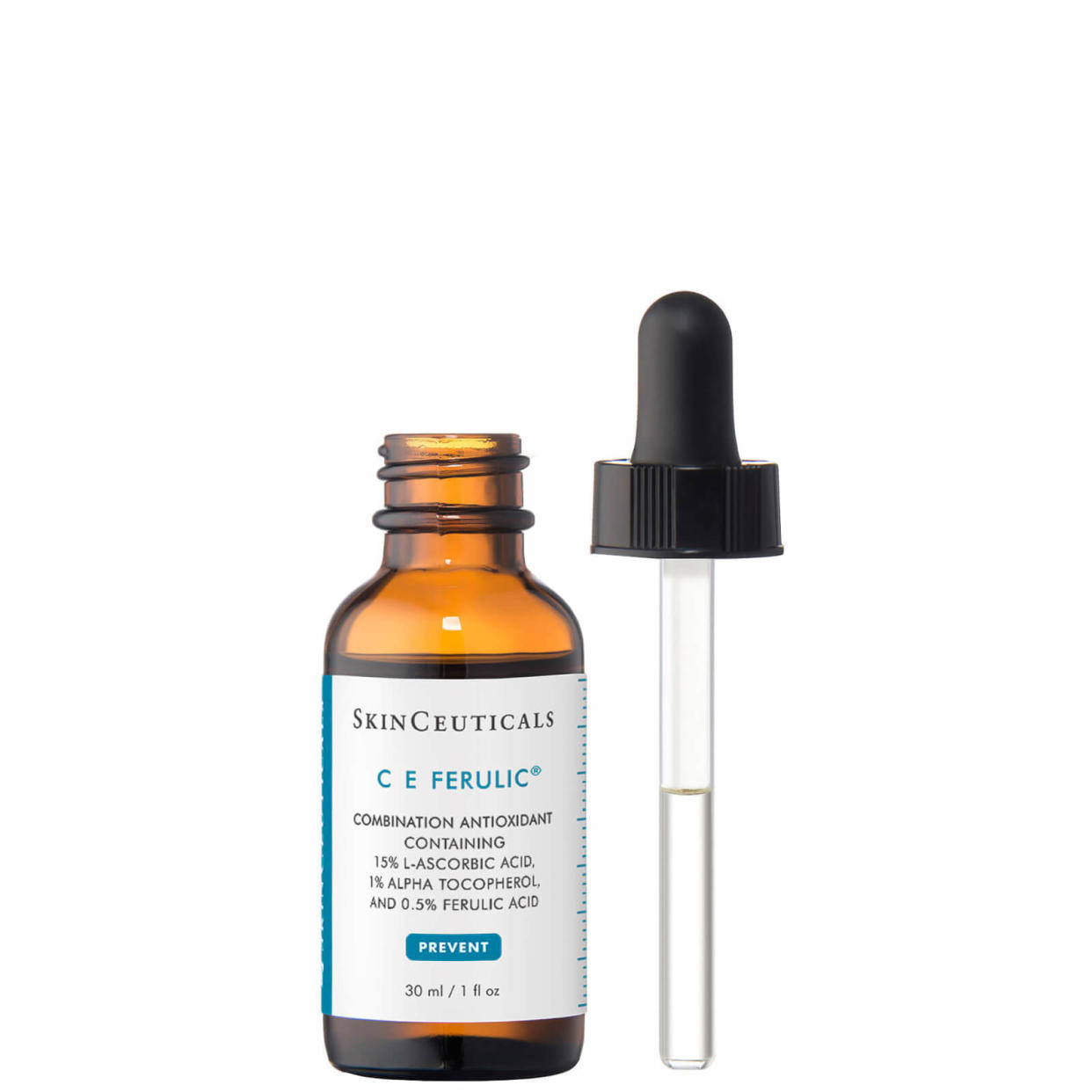
SkinCeuticals Vitamin C E Ferulic Serum $ at Dermstore
SkinCeuticals Vitamin C E Ferulic Serum $ at BlueMercury
SkinCeuticals Vitamin C E Ferulic Serum $ at SkinCeuticals
Step 4 (optional): Eye cream
Eye creams are specific moisturizers for the eye area that help brighten, depuff or smooth the fine lines, according to our experts. They typically have a lighter consistency than moisturizers, so you should apply them before a day cream or SPF.
The best way to apply an eye cream is to gently pat the product around the eye from the innermost to the outermost areas. When done right, it helps moisturize the thinnest and most delicate part of your skin, though our experts say it’s not a necessity when building out a morning skin care routine.
Ilia Bright Start Retinol Alternative Brightening Eye Cream
This eye cream has a plant-based retinol alternative, to smooth the under-eye area, according to Ilia. Compared to traditional retinol, this alternative is safe for sun exposure — so you can use it during your morning routine — and it also has a cooling tip to help aid in depuffing the area, according to the brand. It has a 4.4-star average rating from over 500 reviews at Sephora.
Ilia Bright Start Retinol Alternative Brightening Eye Cream

Ilia Bright Start Retinol Alternative Brightening Eye Cream $ at Sephora
Ilia Bright Start Retinol Alternative Brightening Eye Cream $ at Credo
Ilia Bright Start Retinol Alternative Brightening Eye Cream $ at Ilia
Sunday Riley Auto Correct Brightening + Depuffing Eye Cream for Dark Circles
To target dark circles, this eye cream has caffeine and Brazilian ginseng root extract to depuff and reduce the appearance of bags or dark circles. Apply one to two- pumps of the cream, which has a 4.1-star average rating from over 1,900 reviews at Sephora, and gently tap the product into the skin, according to Sunday Riley.
Sunday Riley Auto Correct Brightening + Depuffing Eye Cream for Dark Circles

Sunday Riley Auto Correct Brightening + Depuffing Eye Cream for Dark Circles $ at Sephora
Sunday Riley Auto Correct Brightening + Depuffing Eye Cream for Dark Circles $ at Ulta
Sunday Riley Auto Correct Brightening + Depuffing Eye Cream for Dark Circles $ at Dermstore
Step 5: Moisturizer
Next up: moisturizers. They help lock in all the products you previously applied and keep the skin barrier healthy by hydrating it, says King. Moisturizers come in different forms including lotions, creams, gels and ointments; daytime moisturizers are typically lighter in weight than evening ones, say our experts.
If you have dry skin, you tend to lack sebum (an oily substance our skin produces). That’s why a thicker cream may be your best option since they are typically oil-based and can make up for any lack of natural oils, says Woolery-Lloyd. People with oily and acne-prone skin may want to consider a gel moisturizer since it’s water-based and will draw moisture to your skin without adding more oil or having the oil sit on top of the face.
Moisturizers usually have one or a combination of the following moisturizing groups, which you’ll often see listed on bottles: humectants, emollients, and occlusives. Humectants hydrate the skin, emollients support the skin barrier and occlusives lock in moisture, says King.
La Roche Posay Toleraine Double Repair Face Moisturizer
This lightweight cream, which comes recommended by Woolery-Lloyd, has ceramides, niacinamide, glycerin and thermal water, which all help hydrate and moisturize the skin, according to the brand. Thermal water is especially good for sensitive skin, including eczema, since these individuals have a more delicate skin barrier, says Woolery-Lloyd.
La Roche Posay Toleraine Double Repair Face Moisturizer
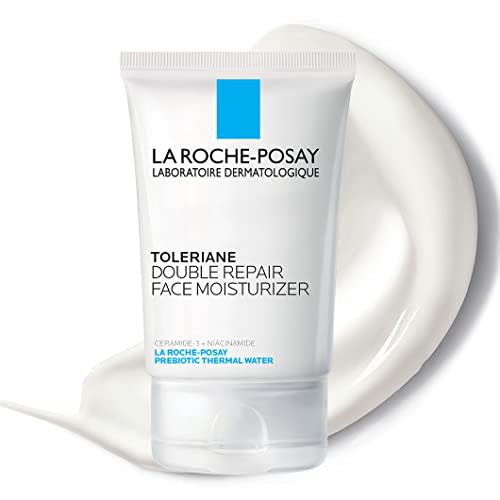
La Roche Posay Toleraine Double Repair Face Moisturizer $ at Amazon
La Roche Posay Toleraine Double Repair Face Moisturizer $ at Dermstore
La Roche Posay Toleraine Double Repair Face Moisturizer $ at Ulta
Senté Dermal Repair Cream
This lightweight Senté facial moisturizer is a current favorite of Kagha’s. A great option for sensitive skin, this formula not only hydrates the skin, but the green tea extract in it also helps calm any irritation and reduce redness, according to the brand.
Senté Dermal Repair Cream
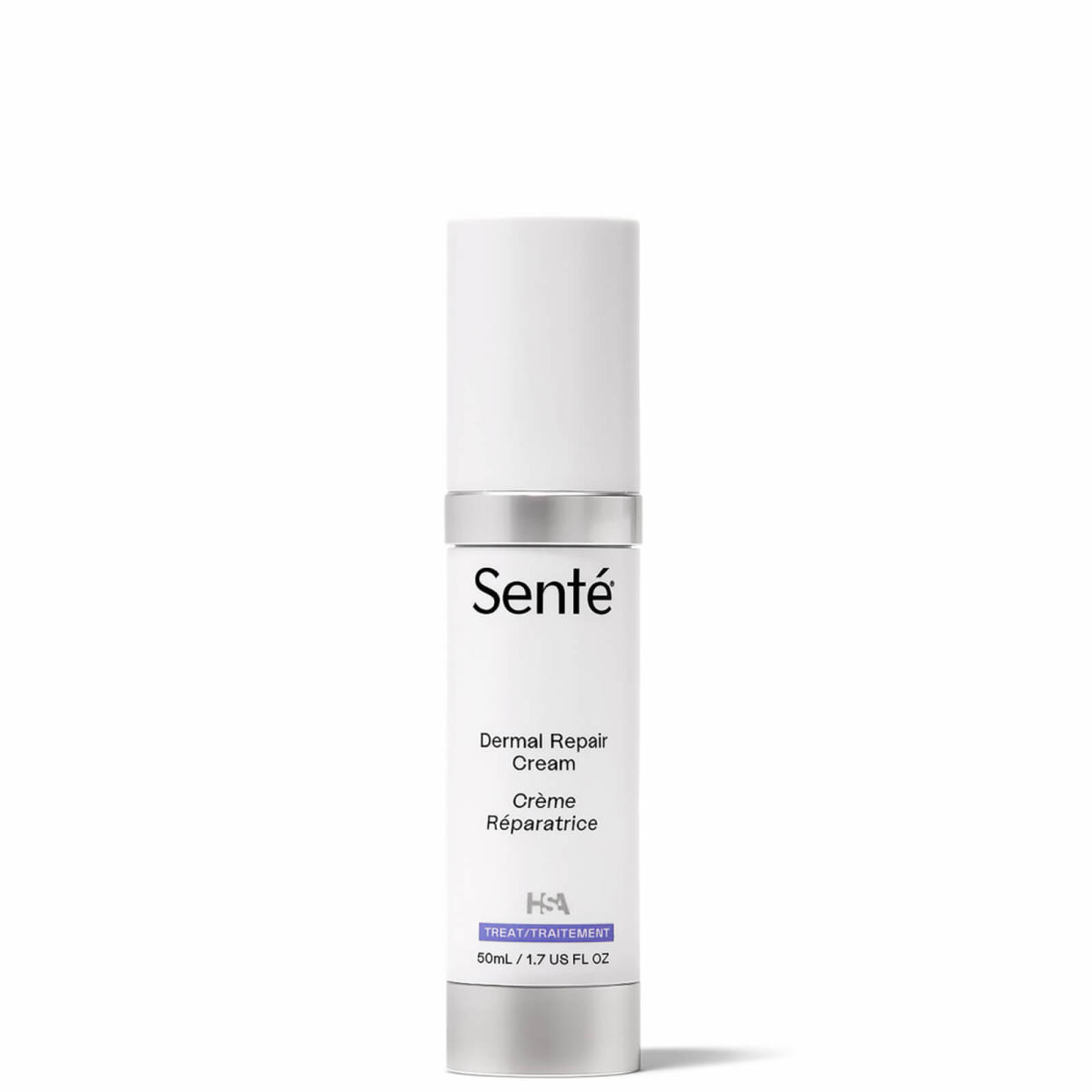
Senté Dermal Repair Cream $ at Dermstore
Senté Dermal Repair Cream $ at Sente Labs
Senté Dermal Repair Cream $ at Skinstore
Step 6: Sunscreen
Sunscreen should be the final step in your morning skin care routine to protect your skin against harmful UVA and UVB rays that can cause cancer. (UVA rays can prematurely age your skin via wrinkles and dark spots, while UVB rays can cause sunburns, according to the American Academy of Dermatology Association.)
Face sunscreens come in mineral or chemical form — one isn’t “better” than the other and choosing one comes down to a matter of personal preference, according to our experts. Mineral sunscreens sit on the surface of the skin and reflect UV rays, while chemical sunscreens absorb and filter out UV light.
You’ll also want to make sure to pick a sunscreen with at least SPF 30 that has broad-spectrum protection (which protects you against both UVA and UVB rays). Apply a nickel-sized dollop to the face in the morning before putting on makeup, says King.
Elta MD UV Clear Face Sunscreen SPF 46
This broad-spectrum SPF is suitable for all skin types and is a favorite among dermatologists, says Woolery-Lloyd. The sunscreen has two active ingredients — combining the benefits of both chemical and mineral sunscreens. (It has titanium oxide, which you’ll typically see in mineral sunscreen and octinoxate, which is one of six chemical filters.) The combination creates a cosmetically elegant formula that doesn’t leave behind a white cast, (which is common with chemical-only sunscreens) and helps reflect both UVA and UVB rays, according to EltaMD. The formula also has niacinamide, which is great for those with acne-prone skin, to help even tone and texture. It can also reduce redness and discoloration in people with skin conditions like rosacea, according to the brand. If you are worried about a white cast, this formula also comes in a tinted version.
Elta MD UV Clear Face Sunscreen SPF 46
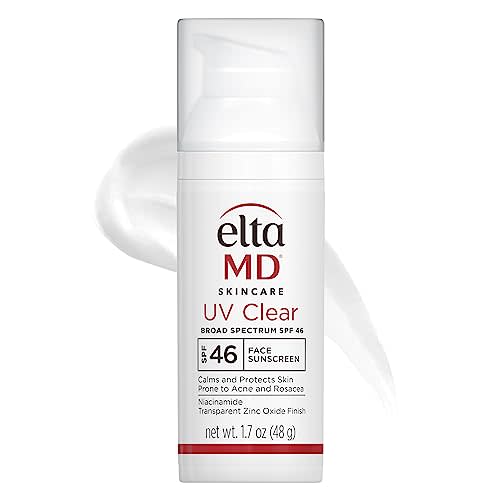
Elta MD UV Clear Face Sunscreen SPF 46 $ at Amazon
Elta MD UV Clear Face Sunscreen SPF 46 $ at Elta Md
Elta MD UV Clear Face Sunscreen SPF 46 $ at Dermstore
La Roche Posay Mineral Anthelios Tinted Sunscreen SPF 50
This tinted mineral sunscreen is suitable for all skin types and complexions including dark skin tones, according to Henry. It protects the skin from UV exposure and also hydrates it with ingredients like vitamin E, a humectant that absorbs water, and dimethicone, an emollient that retains water, says Henry. This broad-spectrum formula has SPF 50 and is water-resistant for 40 minutes.
La Roche-Posay Anthelios Ultra-Light Mineral Sunscreen
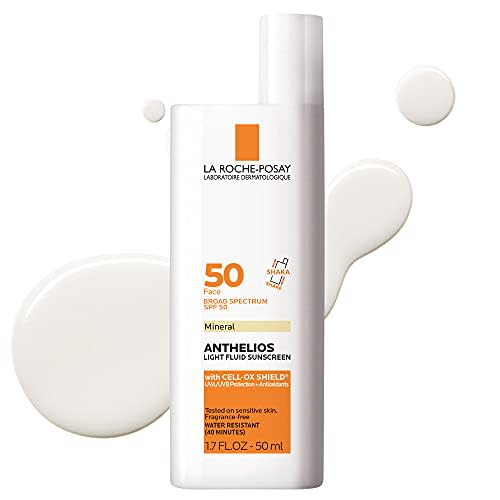
La Roche-Posay Anthelios Ultra-Light Mineral Sunscreen $ at Amazon
La Roche-Posay Anthelios Ultra-Light Mineral Sunscreen $ at Ulta
La Roche-Posay Anthelios Ultra-Light Mineral Sunscreen $ at BlueMercury
Nighttime skin care routine
The goal of a nighttime skin care routine is to clean your skin from any product or debris that piles up throughout the day and to add hydration that will last you through the night. Nighttime routines also help promote cell turnover (which replaces dead skin cells with healthy ones) and stimulate collagen production (to maintain the structure of your skin by keeping it firm), according to Henry.
At night, experts recommend including cleanser, serum, eye cream and moisturizer, which is very similar to an ideal morning routine, minus the SPF application. At night, you can also add in a toner, acne treatment, face oil, and/or special devices or masks if you’re looking to enhance your routine. However, the more products you add in, the more risk there is for potential irritation, says Kagha.
Step 1: Cleanser
Cleansers play a major role at night: They remove makeup, sunscreen, dirt, oil and products that have accumulated throughout the day from your face and neck, leaving your skin clean. At night, you may even want to double cleanse. That’s the process of washing your face twice — first with an oil-based cleanser, followed by a water-based cleanser. The oil-based cleanser breaks down products on the surface of your skin, including makeup and sunscreen, while the water-based cleanser removes leftover residue, pollutants, dirt, debris and excess oil, according to King.
Cleansers come in different formulations, including liquids, bars and balms. If you use a medicated cleanser in the morning, you’ll want to consider a gentler alternative (one that is free of exfoliating or drying ingredients) at night because it may be too harsh on your skin, according to experts.
NakedPoppy Nourish Cream Cleanser
This gentle cream-based formula removes oil, dirt and makeup, while still moisturizing the skin with oils, according to the brand. After massaging a quarter-sized amount into your skin, you can follow it up with a water-based cleanser, like the NakedPoppy Refresh Foaming Cleanser, as part of a double cleansing process if you are interested, says King.
NakedPoppy Nourish Cream Cleanser

NakedPoppy Nourish Cream Cleanser $ at Naked Poppy
Panoxyl Acne Foaming Wash
This foaming face wash for oily and acne-prone skin uses benzoyl peroxide to treat acne, according to Woolery-Lloyd. Since this product has the highest concentration of benzoyl peroxide available without a prescription, you should only use it once a day — otherwise, it can be drying or irritating. To combat these concerns, the formula also has ingredients like glycerin which is a hydrating humectant, according to the brand.
Panoxyl Acne Foaming Wash
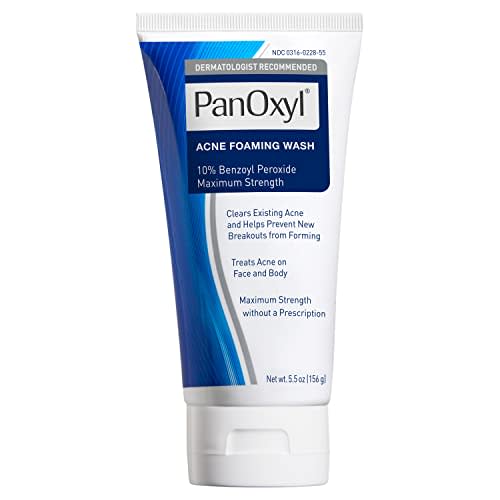
Panoxyl Acne Foaming Wash $ at Amazon
Panoxyl Acne Foaming Wash $ at Walmart
Panoxyl Acne Foaming Wash $ at Target
Step 2 (optional): Toner
If you are looking to further hydrate or exfoliate your skin, you may want to consider a toner. Our experts say this is a completely optional step, but it is great for providing your skin with another round of ingredients to help cleanse and prep the skin for future steps. If you decide to use an exfoliating toner in the morning, consider a hydrating one at night and vice versa.
First Aid Beauty Hydrating Toner with Squalane + Oats
This toner is suitable for all skin types including sensitive skin. The main ingredient is oats, which are very soothing and also offer anti-inflammatory benefits, according to Woolery-Lloyd. Plus, it has honey, which is a humectant with antioxidants to moisturize the skin, according to the brand. After drying your face, pat this milky toner into your skin with your fingers (or via a cotton pad) and let it seep into your skin.
First Aid Beauty Hydrating Toner with Squalane + Oats

First Aid Beauty Hydrating Toner with Squalane + Oats $ at Sephora
First Aid Beauty Hydrating Toner with Squalane + Oats $ at First Aid Beauty
Caudalie Vinopure Natural Salicylic Acid Pore Minimizing Toner
This salicylic acid toner helps exfoliate the skin, reduce excess oil and minimize the appearance of blackheads and pores, according to the brand. To combat some of the dryness that using this may cause, it also has grape and rose water in its formula to calm irritation and hydrate the skin, according to Caudalie.
Caudalie Vinopure Natural Salicylic Acid Pore Minimizing Toner
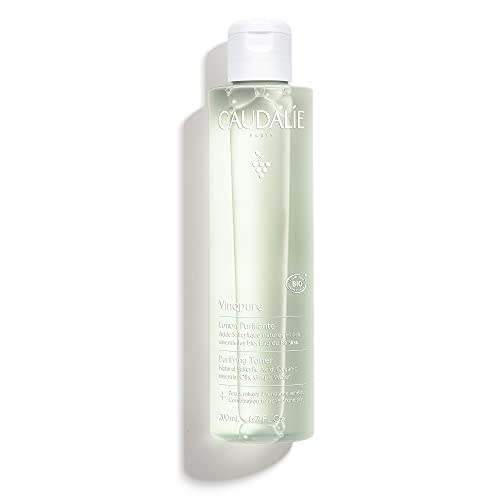
Caudalie Vinopure Natural Salicylic Acid Pore Minimizing Toner $ at Amazon
Caudalie Vinopure Natural Salicylic Acid Pore Minimizing Toner $ at Sephora
Caudalie Vinopure Natural Salicylic Acid Pore Minimizing Toner $ at Saks Fifth Avenue
Step 3: Serums (including retinol)
Serums are especially great to use at night since they’re reparative and restorative, says Henry. Common nighttime formulas have hyaluronic acid to hydrate the skin or chemical exfoliants, like glycolic and lactic acid, to penetrate your pores, remove dead skin cells and unclog pores, according to our experts
Other popular serum formulas have retinol. Retinol, which can minimize the appearance of fine lines and increase collagen production, is highly irritating when mixed with other actives — so our experts recommend avoiding it when also applying vitamin C, glycolic or lactic acid. Overall, retinols thrive at night because they benefit from the growth environment in which our bodies relax, says Henry. It also increases your chances of sun damage and sunburn, which is why it’s typically recommended for nighttime use.
La Roche-Posay Pure Retinol Face Serum with Vitamin B3
If you want your retinol in serum form, this La Roche-Posay formula is recommended by Kagha. Not only does it use retinol to combat fine lines, but it also has hyaluronic acid for hydration and niacinamide to help reduce any potential irritation, according to the brand. Apply it to your face once or twice a week at first and gradually increase your usage.
La Roche-Posay Pure Retinol Face Serum with Vitamin B3
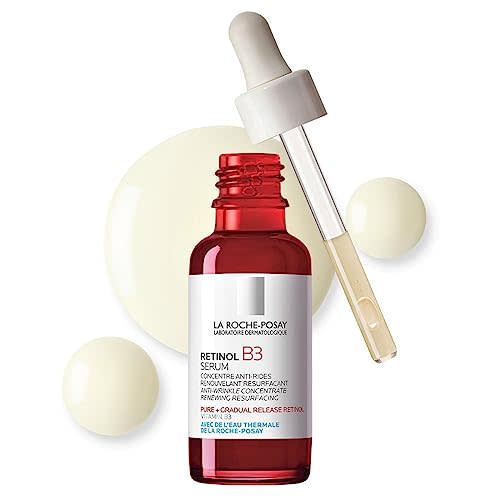
La Roche-Posay Pure Retinol Face Serum with Vitamin B3 $ at Amazon
La Roche-Posay Pure Retinol Face Serum with Vitamin B3 $ at Target
La Roche-Posay Pure Retinol Face Serum with Vitamin B3 $ at Ulta
La Roche-Posay Hyalu B5 Pure Hyaluronic Acid Serum
To combat any dryness, consider this hydrating serum that is suitable for all skin types and is recommended by Kagha. It combines its namesake ingredient with glycerin and thermal water to give your skin some needed moisture, according to La-Roche Posay. Apply three to four drops to your face and neck, according to the brand.
La Roche-Posay Hyalu B5 Pure Hyaluronic Acid Serum
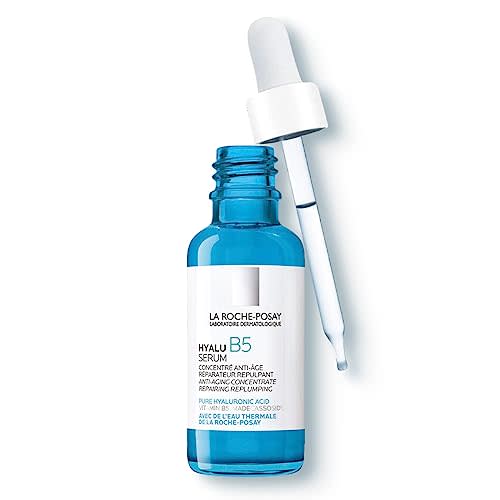
La Roche-Posay Hyalu B5 Pure Hyaluronic Acid Serum $ at Amazon
La Roche-Posay Hyalu B5 Pure Hyaluronic Acid Serum $ at Target
La Roche-Posay Hyalu B5 Pure Hyaluronic Acid Serum $ at Ulta
Step 4 (optional): Eye cream
One of the main functions of eye creams is to hydrate the delicate under-eye area. Since our bodies tend to lose more moisture at night, finding an eye cream to help retain and add moisture to that area is important, according to Woolery-Lloyd.
CeraVe Eye Repair Cream
This formula, which has hydrating ingredients, including hyaluronic acid, ceramides and niacinamide, is suitable for all skin types, including those with eczema. Apply small dots around the eye and pat until fully absorbed — it should help reduce puffiness and dark circles, according to the brand.
CeraVe Eye Repair Cream
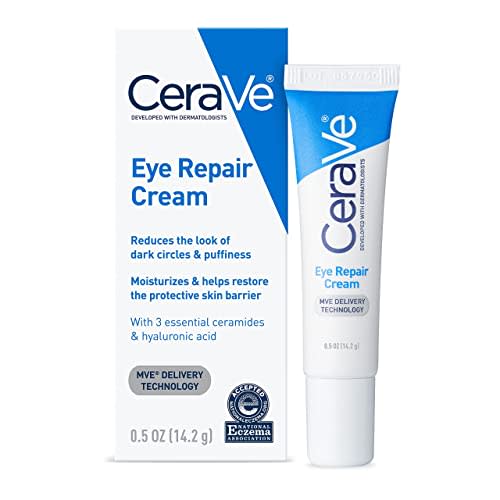
CeraVe Eye Repair Cream $ at Amazon
CeraVe Eye Repair Cream $ at Ulta
CeraVe Eye Repair Cream $ at Target
RoC Retinol Correxion Line Smoothing Eye Cream
If you want to combine a retinol and an eye cream, this RoC cream is a great option, says Woolery-Lloyd. The retinol works to smooth fine lines, while the niacinamide helps hydrate and improve the tone and texture of your skin. You can also use this in conjunction with a retinol serum because these products will generally affect different areas of your face. You can apply the serum on the face (avoiding the eyes) while the eye cream goes directly on the under-eye area, according to King. If you want to use a retinol eye cream and vitamin C serum, apply the antioxidant serum in the morning and the retinol at night so you can still use both products without using them at the same time and risking irritation, says King.
RoC Retinol Correxion Line Smoothing Eye Cream
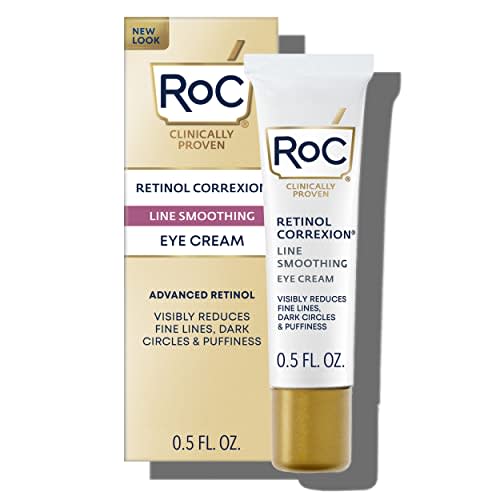
RoC Retinol Correxion Line Smoothing Eye Cream $ at Amazon
RoC Retinol Correxion Line Smoothing Eye Cream $ at Target
RoC Retinol Correxion Line Smoothing Eye Cream $ at Ulta
Step 5 (optional): Acne treatment
If you’re currently dealing with a breakout or are looking to prevent a future one from occurring, you may want to consider an acne treatment, according to our experts. Below, we’re sharing an over-the-counter option that may help.
Differin Acne Treatment Gel
This NBC Select Wellness Award-winning acne treatment uses a retinoid to target common concerns like breakouts and improve skin texture, according to Kagha. The main ingredient is adapalene, which helps treat and prevent acne and with the tone and texture of your skin, according to the brand. Apply the gel in a singular thin layer once a day for the best results, according to Differin.
Differin Acne Treatment Gel

Differin Acne Treatment Gel $ at Amazon
Differin Acne Treatment Gel $ at Target
Differin Acne Treatment Gel $ at Ulta
Skinfix Acne+ 2% BHA and Azelaic Acid Acne Spot Treatment
This overnight spot treatment, which has a 4.6-star average rating from over 400 reviews at Sephora, has salicylic acid to decongest pores, azelaic acid to help even skin tone (especially hyperpigmentation from acne scars) and niacinamide to minimize the appearance of pores, according to the brand. Just apply a small amount directly on the area you want to target.
Skinfix Acne+ 2% BHA and Azelaic Acid Acne Spot Treatment

Skinfix Acne+ 2% BHA and Azelaic Acid Acne Spot Treatment $ at Sephora
Skinfix Acne+ 2% BHA and Azelaic Acid Acne Spot Treatment $ at Kohl's
Skinfix Acne+ 2% BHA and Azelaic Acid Acne Spot Treatment $ at Skin Fix
Step 6: Moisturizer
Moisturizers, which prevent water loss and lock in the products from your previous steps, should be one of the last steps of your nighttime skin care routine. You can use the same moisturizer day and night, though nighttime-specific options tend to have a thicker consistency (which is ideal since that’s when skin loses the most water), according to King.
Kiehl’s Ultra Facial Cream
This fragrance-free face cream is recommended by Henry. With ingredients like squalane and glycerin, it helps your skin retain moisture, and hydrates and softens it, according to the brand. Plus, it’s free of mineral oils, which often clog pores.
Kiehl’s Ultra Facial Cream

Kiehl’s Ultra Facial Cream $ at Sephora
Kiehl’s Ultra Facial Cream $ at Ulta
Kiehl’s Ultra Facial Cream $ at Nordstorm
Charlotte Tilbury Magic Night Cream
This moisturizer has all the components of a good moisturizer, says King. Because it’s a cream, it will have a thicker consistency than a lotion, which is why it’s a great option for nighttime. The Magic Night Cream has retinol, vitamin E and vitamin C in it to moisturize and strengthen the skin, plus it also comes in a mini version (that’s great for travel). Once you run out, you can pop in the refill container to continue your daily usage.
Charlotte Tilbury Magic Night Cream

Charlotte Tilbury Magic Night Cream $ at Sephora
Charlotte Tilbury Magic Night Cream $ at Saks Fifth Avenue
Charlotte Tilbury Magic Night Cream $ at Charlotte Tilbury
Step 7 (optional): Face oil
Face oils, as their name implies, are oil-based skin care products in liquid form that can add hydration and soften the skin overnight, says Woolery-Lloyd. Although the general rule of thumb is to apply skin care products from lightest consistency to heaviest — face oils are an exception. Despite oils feeling lighter in consistency than a moisturizer, they are strong enough to penetrate face creams; it’s also hard for products to break through them — which is why you should apply them last, according to experts.
Face oils work for a variety of skin types, including sensitive skin since specific oils (like sunflower seed oil) can help improve the skin barrier and decrease irritation, according to Woolery-Lloyd. If you have oily or acne-prone skin, however, you may want to be cautious incorporating one into your skin care routine because it could potentially lead to acne flares, says Henry.
If you’re concerned about breaking out from a face oil, look for noncomedogenic formulas that won’t clog pores.
Summer Fridays Heavenly Sixteen All-In-One Face Oil
This non-comedogenic formula has 16 different oils, one of which is sunflower oil, which Woolery-Lloyd recommends because of how hydrating it is and how much it decreases irritation. The best way to apply this facial oil is to smooth it over the skin as the very last step of your routine or add one to two drops into your nighttime moisturizer, according to Summer Fridays.
Summer Fridays Heavenly Sixteen All-In-One Face Oil
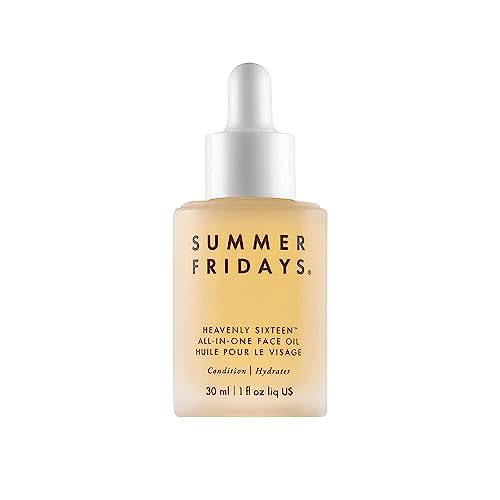
Summer Fridays Heavenly Sixteen All-In-One Face Oil $ at Amazon
Summer Fridays Heavenly Sixteen All-In-One Face Oil $ at Sephora
Summer Fridays Heavenly Sixteen All-In-One Face Oil $ at Kohl's
Olehenriksen Hydrabarrier Nourishing Face Oil
With peptides to strengthen the skin’s elasticity, oil for moisture, and ceramides for hydration, this face oil is suitable for all skin types, including oily skin, since it’s non-comedogenic, according to Olehenriksen. When using it at night, apply five to six drops to the skin by pressing it into the face and neck, according to the brand. (You can also use this in the morning — just add a few drops to your moisturizer prior to putting on makeup or SPF.)
Olehenriksen Hydrabarrier Nourishing Face Oil

Olehenriksen Hydrabarrier Nourishing Face Oil $ at Sephora
Olehenriksen Hydrabarrier Nourishing Face Oil $ at Kohl's
Olehenriksen Hydrabarrier Nourishing Face Oil $ at Olehenriksen
How to shop for skin care products
When creating a skin care routine, our experts recommend keeping the following in mind:
Skin type: Begin by taking your skin type into consideration when shopping. If you have dry skin, look for products that will add and lock in moisture to your skin. If you have sensitive skin or conditions like rosacea and eczema, avoid common irritants like fragrances and dyes. If you have oily or acne-prone skin, consider noncomedogenic products that won’t clog your pores or cause unwanted breakouts.
Skin concern: Your routine steps will likely stay the same no matter what issue you’re trying to resolve, though the products you use in each step will vary. If you’re looking to treat hyperpigmentation or dark spots, look for ingredients with brightening properties like vitamin C. To combat dryness, consider formulas with hyaluronic acid and ceramides. For those wanting to reduce the appearance of fine lines, try products with retinol or retinol alternatives depending on your skin’s sensitivity. If you’re looking to even both tone and texture, you might want to choose a product with niacinamide or use a chemical exfoliant.
Meet our experts
At Select, we work with experts who have specialized knowledge and authority based on relevant training and/or experience. We also take steps to ensure all expert advice and recommendations are made independently and without undisclosed financial conflicts of interest.
Dr. Michelle Henry is a board-certified dermatologist with the Skin & Aesthetic Surgery of Manhattan in New York City. Her areas of research include high-risk skin cancer treatments, aesthetic surgery and treating skin of color. She specializes in Mohs micrographic and reconstructive and cosmetic surgery.
Dr. Heather Woolery-Lloyd is a board-certified dermatologist and is the director of the Skin of Color division for the University of Miami Department of Dermatology. Her areas of expertise include skin of color, cosmetic dermatology, pigmentary disorders and more.
Dr. Hadley King is a board-certified dermatologist at her own private practice in New York City. Her areas of expertise include medical and cosmetic dermatology.
Dr. Karen Kagha is a board-certified dermatologist at Skin Care and Laser Physicians of Beverly Hills. Her areas of expertise include medical dermatology, skin of color and cosmetic dermatology, including injectables and lasers.
Why trust Select?
Bianca Alvarez has been covering beauty for a year and has written about various skin care topics, including sunscreens, body washes and eye creams. For this piece, Bianca interviewed four dermatologists about the best order to apply skin care products. She also included their product recommendations for each step.
Catch up on Select’s in-depth coverage of personal finance, tech and tools, wellness and more, and follow us on Facebook, Instagram, Twitter and TikTok to stay up to date.
